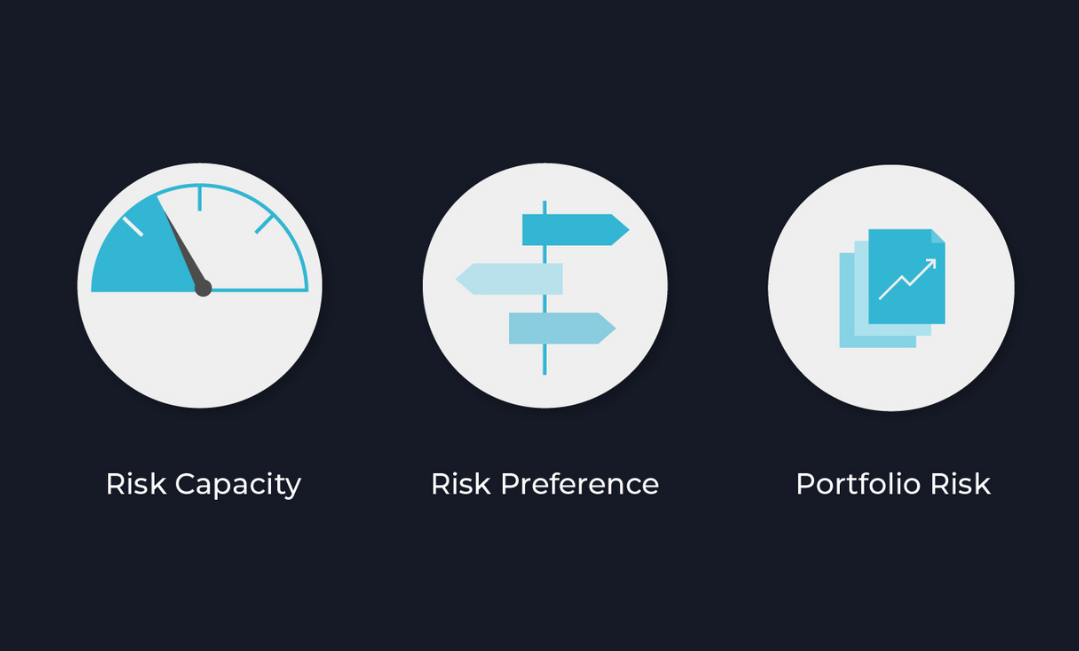With pensions nearing extinction, most Americans have had few other options but to build their own retirement nest eggs. Many individuals have turned to their 401(k) or IRA, to build up funds, hoping it will be enough down the line when they finally stop earning an income.
If you have a good portion of your investable assets in a retirement account, you’re not alone. According to recent data, most Americans have about a third of their investable assets in these retirement accounts. With so much of your money going into these accounts, maintaining a portfolio that reflects your unique goals and life factors is crucial.
If you’ve read up on investing, you have probably heard of the popular “buy and hold” strategy, which you may have adopted yourself. While this method traditionally outperforms day and otherwise active trading, a set-it-and-forget-it mentality can have some pitfalls. One of these pitfalls is skipping out on annual reviews of your risk profile.
Risk is the uncertainty of adverse results in regard to your investments or financial well-being. It plays a key role in understanding which assets to invest in, as well as which ones to avoid. Regularly assessing your risk as your life evolves will ensure you have a portfolio that best reflects your current financial situation while keeping you on track to meet future retirement goals.
The Role of Risk Profiling in Retirement Portfolios
In the financial world, risk is typically divided into two main types: capacity and tolerance. Together, these make up the key components of your investing risk profile.
Risk tolerance is your comfort level when facing losses in your investments. Many factors can influence risk tolerance, such as your background, education, and experience in investing. Risk tolerance is often measured in general terms. The three most common are conservative, moderate, and aggressive. These terms are usually broken down further to include moderately conservative and moderately aggressive.
Risk capacity measures your actual ability to take on investment risk. Risk capacity can be assessed by scoring life factors that influence your overall financial picture. A proper risk questionnaire—like the one provided by TIFIN Wealth’s Risk Alignment solution—also measures risk capacity.
For example, our questionnaire scores risk capacity and calculates clients’ scores based on myriad life factors, such as:
- Annual income
- Assets to Invest
- Expenses
- Age
- Investment Time Horizon
- Household Size
- Zip Code
- Household Health
- Consistency of Earnings
- Stability of Employment
Understanding your risk profile is important because it affects investment decisions, such as whether to be more aggressive or conservative in your portfolio. But more importantly, it can better protect you while simultaneously enhancing your wealth.
Ideally, the right asset allocation will offer you what you both want and need—preventing you from having to withdraw money during down markets and capturing maximum gains when the economy is going well.
Annual Assessments of Your Risk Profile
Just like with your portfolio, evaluating your risk cannot be a set-it-and-forget-it approach. Risk profiles need to be reviewed annually because your feelings regarding your investments, as well as the life factors that make up your risk capacity, will inevitably change.
Any changes in the life factors listed above can affect your risk profile. You may, for example, get married, have children, move, get promoted, or become ill. All of these life events—as well as many others—affect your actual ability to bear risk.
These events may also affect you psychologically, too. Having children or getting married may make you more conservative, or an increase in income may make you feel comfortable enough to invest more aggressively.
Adjusting your asset allocation to reflect your current risk profile can help maximize your returns while protecting you during more vulnerable times, such as when you approach or enter retirement.
There may be periods of time when you can take on more risk, but if you fail to adjust your portfolio, you may miss out on higher returns. Since riskier investments may outperform more conservative portfolios in the long run, it’s important to try to capture additional gains when you have the risk profile to do it.
Likewise, if you have a conservative risk profile but are invested in riskier assets, you may find yourself having to withdraw money at a time when there’s a current dip in the market.
Regularly reviewing and updating your risk profile each year can prevent these types of financial mishaps. Think of annual risk assessments as annual check-ups on your finances. Just as you may take your vehicle in each year for a tune-up, reviewing your risk profile ensures everything is working as it should.
Risk and Asset Allocation
Asset allocation is an attempt to divide up your investments in such a way as to maximize rewards while diminishing risk. Proper asset allocation incorporates risk capacity and tolerance to build a customized portfolio that meets your particular needs and life factors. Getting the right asset allocation is essential to hitting financial goals and building wealth since it dictates your overall investment gains and losses.
Many brokerage firms use target date funds and model portfolios to determine asset allocations for their clients. Both are types of funds predefined with certain expectations regarding levels of returns and risk.
Target date funds gradually adjust your portfolio from a more aggressive allocation to a more conservative one as you age. Target date funds are based on the estimated year of your retirement, known as your “target” date. This year is identified in the name of the fund. For example, if you plan on retiring in 2040, then that number would be included in the name of the fund.
These types of funds usually give you three options based on your risk tolerance, which are conservative, moderate, or aggressive. They do not, however, include your risk capacity. Regardless of your actual ability to take on risk, the fund would still become less aggressive as the target date approached.
Model portfolios are diversified portfolios of funds that are created by investment management and/or financial advisory firms. They recommended a mix of different asset classes and are meant to provide an expected return while bearing a defined degree of risk. For instance, a more conservative portfolio may have an asset allocation of 60% bonds and 40% stocks. These funds are regularly adjusted to match the desired level of risk, return, and asset allocation of that particular model.
While both of these types of investment solutions have their merits, they also have the shortcoming of not factoring in your complete risk profile. Since everyone’s life factors are unique, using a prefabricated fund may not be the best option.
The long-term cost of not having a portfolio that matches your risk profile exactly could mean large amounts of returns left on the table or a devastating loss that happens at the worst possible time. A better strategy is to implement a broader financial planning strategy that looks at your goals, the risk inside the investment portfolio, and an individual’s unique risk capacity and tolerance scores. As stated in the Investopedia article “Target-Date Funds: Advantages and Disadvantages,” “Despite their simplicity, investors who use target-date funds need to stay on top of asset allocation…and investment risk.” We can apply the same parameters to model portfolios, as well.
At TIFIN Wealth, we understand that a one-size-fits-all strategy isn’t the best for clients. Our risk capacity scoring system includes investment time horizon (target date) and risk tolerance, but those are only two of many factors that our advisors use when putting together portfolios. We believe that investment portfolios, tailored to each person’s unique risk profile, create better results.
The Rewards of Having Your Risk Profile and Retirement Goals Work Together
Understanding your risk profile and ensuring it’s reassessed annually helps balance risk and reward as your life factors evolve. Even if you have a small amount in your retirement portfolio, knowing your risk profile in the context of your retirement goal can make a sizable difference in the long run, especially as your portfolio grows.
As we covered above, knowing your retirement risk could help you feel comfortable taking on different asset classes and thereby capture bigger gains. Imagine repeatedly missing out on potential upside because you were unsure if you could invest more aggressively. Sitting out on just one major bull run can lead to a smaller retirement account, and when this happens repeatedly, the gap between what you end up with and what you could have had is compounded.
If you’re unsure of how to assess your risk, you can work with a competent financial advisor who uses a proper risk profile scoring system. The risk profiling platform here at TIFIN Wealth scores both risk capacity and tolerance. Many risk profiling systems only score risk tolerance, which is based on feelings, and ignore risk many human capital factors.
We believe this is a serious shortcoming in the typical risk profile questionnaires. When you know how much risk you can actually take, rather than just your opinions on it, you can proceed knowing that your investments are aligned with your life.
In addition, working with a financial advisor or digital financial planning tool, like the one offered by TIFIN Wealth, can also help assess your financial goals and set an investment roadmap for how to achieve them. This is typically called your financial plan or retirement plan. When this is outlined, you can use the information to track your savings against your goals and see how you can allocate assets in your retirement strategy. When partnered with a risk profile like you can create with TIFIN Wealth Risk Alignment, this allows you to triangulate, track and invest to stay on track or make any necessary adjustments.
Regardless of what you use to define your goals and your risk, the important takeaway is to make sure like your personal health you stay on top of your goals and investment risk as your life situation changes. In the end, this can dramatically impact whether or not you can achieve the retirement of your dreams.


